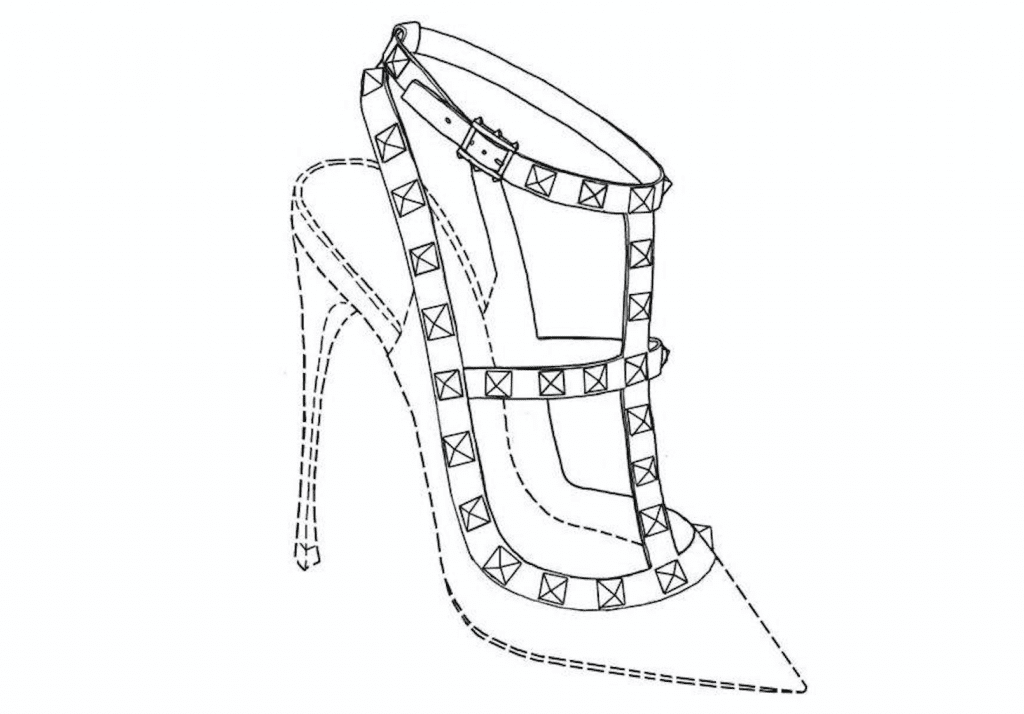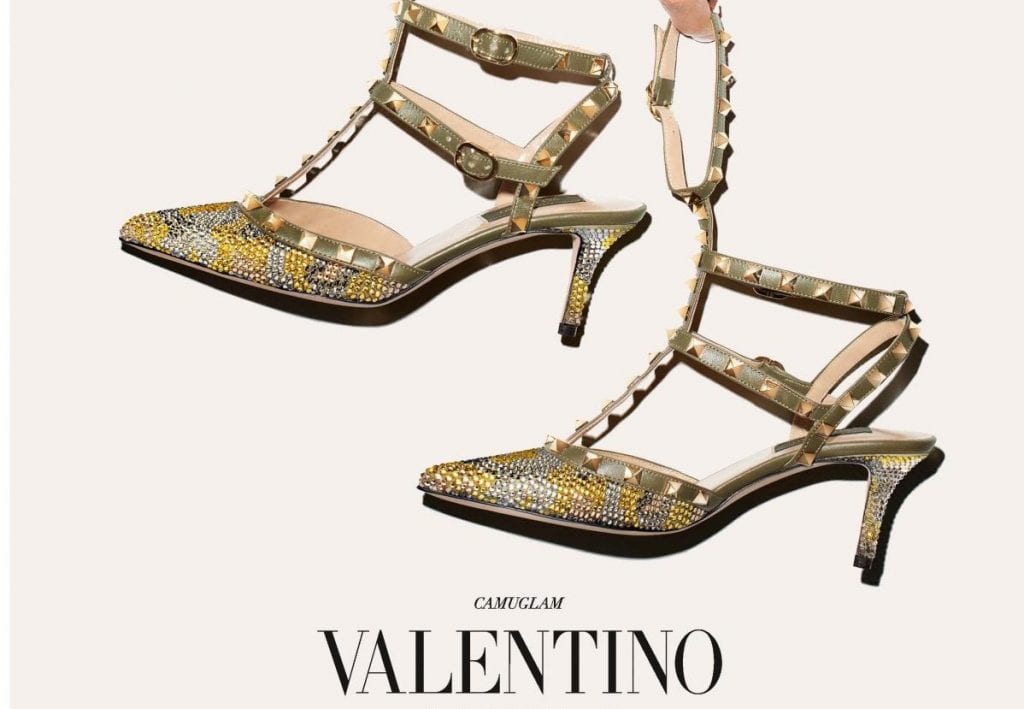Despite selling out “every year” since their debut in 2010 and generating over $152 million in sales for Valentino between 2014 and 2019, alone, the design of the Italian fashion brand’s Rockstud pumps does not function as a trademark. That is what the U.S. Patent and Trademark Office (“USPTO”) stated in a non-final Office Action in February, in which it preliminarily refused to register the design of the shoe – namely “a three-dimensional configuration of a shoe with a single ankle strap and T-strap and collar which are adorned with pyramid shaped studs” – on its Principal Register.
According to the USPTO’s letter, Valentino’s shoe design fails to function as a trademark (in other words, it does not serve as an indicator of the source of the products) because it “consists of a nondistinctive product design or nondistinctive features of a product design,” and thus, is not registrable on the Principal Register without “sufficient proof of acquired distinctiveness.” More than that, an examining attorney for the trademark body stated that the design is not eligible for registration because it is “merely a decorative or ornamental feature of [Valentino’s products] and, thus, does not function as a trademark to indicate the source of [Valentino’s products] and to identify and distinguish [Valentino’s products] from those of” other brands.
Seemingly anticipating the USPTO’s pushback, Valentino asserted in connection with its application (serial no. 88672186) that the shoe design had “acquired distinctiveness … based on [its] use of the mark in commerce … five years prior to” Valentino filing its application. Unsatisfied with Valentino’s claim, the USPTO held that “the allegation of five years’ use is insufficient to show acquired distinctiveness because the applied-for mark is highly ornamental and common on shoes.” In support that assertion, the USPTO stated that brands “commonly use studs along the tops and along straps of shoes as a decorative feature of shoes,” which means that “consumers will perceive them only as an ornamental and nondistinctive feature of the goods.”

Counsel for Valentino responded to the USPTO’s Office Action last week by way of a 227 page filing, in which it attempts to make its case as for why the design of the Rockstud pump is, in fact, protectable trade dress that should be registered.
Among other things, Valentino claims that the Rockstud pump “has been a mainstay on store shelves for over a decade, highlighting their strength in the market and constant profitability,” has enjoyed “consistent demand in the U.S. and around the world,” has been “photographed on “countless celebrities,” and has been the subject of “extensive third-party press and unsolicited media coverage,” thereby, reaching “millions of people.”
Beyond that, Valentino claims that it has “invested millions of dollars in promoting the sales of its Rockstud pump in a wide variety of media,” and that “within five years of introducing the Rockstud shoes, [its] revenues doubled,” a testament to the “incredible success” of the shoe and the “tremendous renown” it has achieved.
As a result, and given that a “determination as to whether a mark has acquired distinctiveness [depends largely on] evidence, such as sales, presence on the market, renown, and advertisement,” Valentino claims that its “Rockstud pump shoe has acquired distinctiveness as a trademark in the U.S. through [its] exclusive and continuous use since 2010.”
Still yet, Valentino essentially claims that if footwear brand Christian Louboutin’s red soles have acquired distinctiveness, its Rockstud pumps have, too. Pointing to the U.S. Court of Appeals for the Second Circuit’s 2012 decision in the Christian Louboutin v. Yves Saint Laurent lawsuit that “Louboutin had demonstrated evidence that the public associated the lacquered red sole of its shoes with Louboutin” based on evidence of advertising expenditures, media coverage, and sales success, which “demonstrated both that Louboutin has created a symbol and that the symbol has gained secondary meaning that causes it to be ‘uniquely’ associated with the Louboutin brand,” counsel for Valentino argues that based on the evidence the brand has submitted, the same holds true for Valentino and its Rockstud pump.
In short, Valentino claims that “as the evidence [that it has] submitted shows, Valentino has enjoyed similar success for the Rockstud pump.”
In addition to attaching a declaration from Valentino’s general counsel Giacomo Leo, who attests to the success of the shoe design and the various media and sales accolades associated with it, Valentino submitted more than 200 pages of evidence depicting its ad campaigns that feature the specific Rockstud pump design, as well as third-party media content that features the shoes all in furtherance of its argument that the design has achieved acquired distinctiveness.
Counsel for Valentino filed similar responses to two other Office Actions last week, one in connection with an application for the trade dress of a Rockstud flat shoe (serial no. 88672019) and another for a separate high-heeled Rockstud sandal design (serial no. 88672225).














